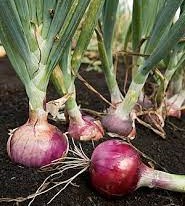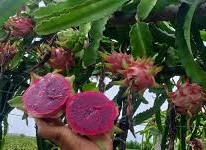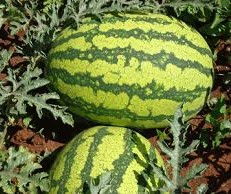INTRODUCTION
Farmers and upcoming potential farmers thank you for visiting our page Raw Profiles. com, welcome. This page will touch on the most common crops grown in Kenya for profit making. Farming has been embraced by both the young and old since it is a profit-making practice, unlike in previous years when farming was only done for home use. One of the crops that are popularly grown is red onions among others.
The red onions are widely grown in Kenya and are known for their spicy flavor. White onions are another popular variety.
1. ONIONS

It is important to identify the right location to plant. This is because the onions require well-drained soil and adequate sunlight as well. The Kenyan climate is suitable for onion farming, especially during the rainy season. That is in, April – June. In Kenya, onions take about 6 months to mature.
Land Preparation
The farmer has to note that preparing the soil is critical so that a bumper harvest is achieved.
Key points when doing land preparations
1. Location plays the most important role because for onions to flourish they need well-drained soil and adequate sunlight. It is recommended to grow onions in low-lying areas as this would lead them to rot.
2. It is very important to do a soil test before planting.
3. To improve the soil`s drainage and to give nutrients, it is essential to add compost to improve the soil.
4. To loosen up the soil and create a bed for planting, tilling is done once the location is identified.
5. When the soil is loose and fertile then the onions are planted using the right spacing.
Adequate water in onion production is key as when the water is inadequate, the onions will not develop properly. Similarly, too much water causes the onions to rot. The soil should be moist.
During the growing season, the onions are watered every 3-5 days but, the frequency is increased when the weather is dry.
Thinning in onions is done to assist the growing process as it allows the plants to focus their energy on producing fewer and larger onions. Thinning also helps in the prevention of overcrowding and allows air circulation, which reduces the risk of fungal diseases.
Mulching is also done in the onion field to help retain moisture in the soil, keep the soil cool, prevent soil erosion, and suppress weeds. Organic materials such as straw, grass clippings, or leaves are recommended when doing mulching. Mulching the plants boosts a bountiful harvest.
Diseases
Some of the diseases that affect onions include ;
1. Downy mildew; This fungal disease affects the leaves on the onions making them thin, turn yellow, and eventually die.
2. Fusarium root rot; This disease makes the roots of the onion rot and die.
3. Thrips; These are small insects that feed on the leaves and flowers of onions and may cause viruses to the plants.
4. Onion maggots; These are larvae of flies. The pests burrow into the onion bulb causing them to rot.
5. Arphids; They are small insects that suckle and damage the onion plants and reduce yields.
Harvest and market
Harvesting depends on factors like the type of onions grown including the conditions of the farm. Normally it is estimated to harvest 10 -15 onions from each plant. Sometimes it could go up to 20 onions in each plant if the onion variety is larger.
Onions are one of Kenya`s main exports. Onions can be sold in different ways depending on the farmer’s quantity and methods. Most farmers in Kenya sell to wholesalers. Another option is selling through online platforms as there are websites that allow farmers to market and sell their products. Another way is through direct sales. this method is efficient in that it enables farmers to sell directly to buyers and is mostly used by farmers who have a smaller quantity of onions to sell.
Diseases and care.
The best fertilizer for onions would be one that is high in nitrogen and low in phosphorous. They help promote strong growth and large bulb size. The most popular type of fertilizer is DAP. Another popular fertilizer is N.P.K.
2. DRAGON FRUIT

This is a tropical fruit that has high fiber and has a low-calorie rate. It also has minerals and quite several vitamins. Research has shown that it has a pear or kiwi-like taste. It is mostly used in salads, smoothies, yogurt, or eaten plainly.
The most common varieties grown in Kenya include;
a] Red dragon fruit; This type of fruit is slightly larger than the Egg Dragon fruit.
b] Yellow dragon fruit; This is the largest of the three mentioned. It has a slightly sweet flavor. The fruit has a little fibral aroma and a creamy taste characterized by white flesh and yellow skin.
c] Redwhite dragon fruit; This type of fruit is the size of a chicken egg and it is the most common variety that is grown in Kenya. It has a crunchy texture and mid-sweet flavor and is characterized by white flesh and red skin.
Land Preparation
The dragon fruit flourishes well in tropical to subtropical climate areas. The ideal places for fruit farming are areas with warm temperatures and moderate humidity. During the fruiting period, the climate should be dry and this is to avoid problems like fungal diseases from arising.
The dragon fruit requires sunlight daily for fruit production and optimal growth. A sunny location is ideal and appropriate shade. If required when it`s extremely hot, caution is observed as too much shadow can lead to reduced fruiting and weak plants. Dragon fruit seeds can be extracted from mature fruits and are used to grow new seedlings. Proper spacing is crucial since narrower spacing gives quicker production than larger spacing.
Pests and diseases and control
The health and productivity of the dragon fruit could be attacked by various pests and diseases. The pests include ;
1. Arphids; Which feed on the plant sap and can transmit the virus to the plants. Their attack can result in distorted growth and reduced quality of the fruit.
2. Fruit flies which lay their eggs in ripe fruit and spoiled fruits which are infested.
3. Mealybugs which are sap-sucking insects, cause stunted growth and deformation. They attract mold and other pests by producing a sticky substance called honeydew.
4. Scale insects that attach themselves to the plant stems and leaves, sucking out sap thus making the plant weak. They look like small, waxy bumps on the plant surface.
5. Thrips can transmit plant viruses and they feed on flowers and young shoots of the dragon fruit.
Pest treatment
The identified land for planting should be treated with fertilizer. 20 kilograms of organic fertilizers should be used. 0.5 kilograms of superphosphate and 1 kg NPK 16 -18 should be used per posting before the actual planting of the dragon fruit .150 grams of urea combined with 50 grams of phosphates should be used three times a year during the first year. This is during the planting stage.
Diseases of the dragon fruit.
1. Stem conker – it is caused by a fungal pathogen that can infect the stems causing wilting of the dragon fruits.
2. Anthracnose – it causes dark lesions on the dragon fruit leaves and fruits and it is a fungal disease.
3. Yellowing diseases – many viral diseases can be the cause of yellowing on dragon fruit and lead to its decline in plant health.
4. Bacterial soft rot – It leads to plant collapse and fruit decay as it is a bacterial disease that causes softening of plant tissues and blackening.
5. Root rot – it is caused by excessive moisture and poor drainage as the plants decay-causing stunted growth and death of the plant.
Harvest and market
-The supply of dragon fruit is quite slow as compared to other fruits as there is a rise in demand for the fruit. In Kenya, the dragon fruit has a ready market in upmarket areas like Parklands, Westlands, and Muthaiga.
-In the export market the dragon fruit remains enormously untopped as farming is not popular in Kenya.
-After harvesting great places to sell the fruit include open-air markets, hotels, and supermarkets as most Kenyans also take into consideration the health benefits of the fruit.
3. WATER MELON

Watermelons thrive best in hot regions such as Kajiado, Machakos, Kitui, and regions in coastal areas. The plant produces large and juicy fruits. It is very important to choose an excellent seed to get excellent results. The commonly used varieties include Sweet Rose F1, Sukari F1, Zuri F1, Crimson Sweet, and Sugar Baby.
Land Preparation
The soil should be slightly acidic and for watermelons to give out good yields the soil should be well-drained and loamy. The soils should be rich in nutrients as well. Warm temperatures should be present in the soil for proper growth and development thus the best areas for watermelon farming are lowlands.
In an acre piece of land, roughly 500g of seeds are required. Spacing should be done at 15 meters between the rows and 1 meter from one crop to the other. Enough space is required for the vines to spread well. To allow for weeds to dry and decompose, land preparation should be done early before planting.
Sometimes the seeds are first raised in a seed bed and then transplanted in the main field but the disadvantage of this is that it causes disturbances to the root systems. Direct planting in the field is usually recommended.
Pests
1. Melon Fly leads to the production of deformed fruits and immature dropping of the infested fruits because it attacks the young fruits altering their cell development and mutiplication.
KINGCODE ELITE 50EC 10ml/20l or OCCASSION STAR 200SC 3ml/20l or PROFILE 440E 30ml/20ml is sprayed.
2. White flies affect plant growth because they attack suck plant sap and excrete honeydew where mold grows. Spraying is done using TAURUS 500SP 10g/20l or LEXUS 247 SC 8ml/20l or KINGCODE ELITE 10l/20l.
3. Leaf miners reduce photosynthetic area and lead to leaf wilting as the larvae mine under the leaf surface creating white mines which increase in width as the larvae mature.Treatment is done using ALONZE 50EC ml/20ml or ESCORL 10 EC 120ml/20l or LEXUS 247 8ml/20l 0r OCCASSION STAR 200SC 3ml/20l.
4. Cutworms which are mostly found in the soil near the plant root zone cut down young and fragile stems as they bite and chew the plants. They are brown in color pests.
5. Nematodes are found in the soil and are microscopic parasites. They cause plants to wilt and pull them from the soil. They cause the roots to be swollen, distorted and have knots that root, and finally the plants die. The plant holes should be drenched well with ALONZE 50EC 10ml/20l or a mixture of basal fertilizer with 2kg of ADVENTURE 0.5GR.
6. Thrisps.Nymphs or adults are equally destructive as they feed on the leaves mostly flowers by sucking sap which damages the plant and leads to flower damage, Spraying should be done using ALONZE 50EC 5ml/20l or OCCASSION STAR 200SC 3ml/20l.
7. Red spider mites are a havard in dry and hot conditions. They damage the plants by piercing and sucking the crop.One should spray ALONZE 50EC 5ml/20l or OCCASSION STAR 200SC 3ml/20l.
8. Arphids feed by piercing and sucking the plant sap and reproduce at a very high and fast rate. They feed and excrete honeydew which enhances the development of sooty mold that lowers photosynthetic area and causes stunted growth.Action should be taken by spraying PENTAGON 50EC 10ml/20l .
Diseases
1. Fusarium wilt which causes the leaves to begin wilting from bottom to top. Spraying is done using Foliar PYRAMID 700WP 50g/20l or ABSOLUTE 355 SC 10ml/20l after every two weeks. Drenching using GREENNCOP 50WP 100G/20L is done.
2. Leaf spots cause the development of sports on leaves and the spots are water-soaked.Spraying should be done using RANSOM 600WP 15g/20l or CHARIOT 500SC 2oml/20l or ABSOLUTE 375SC 10ml/20l or MILESTONE 250SC 10ML /20L.
3. Dumping off which is a soil-borne disease causes the seeds not to germinate because the seeds rot and eventually die. The holes should be drenched with PYRAMID 700WP 100g/20l.
4. Downey mildew leads to the formation of yellow patches on the underside of the leaf. The levels turn brown and eventually fall off. Spraying is done using GEARLOCK TURBO 250WP 25g/20l or FORTRESS GOLD 720WP 40g/20l TOWER 720WP 50g/20l or KATERINA 720SC 40/20l.
5. Anttracnose are visibly in fruits as circular black-brown sunken lesions which cause wilting of the vines.Spraying is done by using RANSON 600WP 15g/20l or DUCASE 250EW 20ML/20L
6. Powdery mildew develops as a whitish-like powdery growth on the upper leaf surface. Plants turn yellow and wilt as the stem gets infected.Spraying is done using RANSON 600WP 15g/20l or DOMAIN 250 250EC 10ml/20ml or ABSOLUTE 375c 10ml/20l.
7. Watermelon Mosaic is a viral disease that is transmitted and spread by various species of aphids in non-persistent mode. The leaf sizes reduce patches of dark green tissue alternating with yellow-green, They are controlled using KING CODE ELITE 50ECg.Prices 10ml/20l or LEXUS 247SC 8N=ML /20l.
Harvest and Market
Harvesting of watermelons commences about 3-4 months after planting. Watermelon retail price ranges from Ksh.70- 110 per kilogram and the wholesale price is Ksh. 70 per k.Prices may vary from county to county depending on the availability of the commodity.
4. PASSION FRUIT

The Passion fruit is very popular and one of the top export fruits in Kenya. It grows approximately 16-20 feet per year as it is a vigorous continuing climbing plant. It is used to make juice blends and the crop is very rich in vitamins.
Passion fruit has good high returns to farmers if that is under good maintenance although the fruit is labor intensive and prone to pests and diseases. It produces fruits within a year and it is mostly grown in Kakamega, Nyeri, Kisii, Murang’a, and Thika among other counties. In Kenya there two major species that are widely grown and they are namely:
1. Yellow Pasion Fruit
This type is usually yellow when ripe and oval and has an aroma that is less. It does well in Kenya because it is adapted to the tropics
2. Purple Passion Fruit
This variety grows well in higher altitudes above 1000m ranging from 1200-2000m in cooler areas. It is purple when ripe slightly acidic and tasty. The fruit has a strong aroma and is round. This variety is suited for subtropical regions.
Land Preparation
Adequate rainfall is required for the proper development and growth of passion fruit. If the rain is not enough then an alternative method is adopted to supplement the rain.
Planting is done on-site with good shelter cover as the vines require areas with high temperatures. The land should be plowed before planting roughly two to three months before planting. Holes should be 2 feet by 2 feet at least three weeks before transplanting. The ideal spacing for the holes should be 2 meters between raws and 3 meters within rows.
One to two buckets of debes of manure should be added together with two handfuls of planting fertilizers like DAP/TSP in each hole and covered with soil well. The next step is to water and do mulching. So that more branches can sprout to produce more fruits running should be done as early as they are transplanted.
Training vines to get them on the wires is done as soon as possible. Stakes should be erected on the ground beside each plant and attached to the wire for support. The stems should be supported with sticks placed at a spacing between ten meters from each other to enable the climber to plant tree spread and also make sure the fruits don’t touch the ground.
Fertilizer application is done 4 weeks after planting using CAN per each plant on the ground. The same procedure is repeated after four weeks. Manure is also used every 3 months for maximum yields. Running to remove dead stems and unproductive shoots is done. When running has been done it is important to disinfect with detergent to curb the spread of viral diseases.
Intercropping with vegetables such as tomatoes, cabbages, and beans is essential as it provides good compost and also helps in controlling soil erosion.
NB: Avoid intercroping with squashes, pumpkins, and cucumbers because they share the same pests and diseases. Sorghum, cowpeas, and maize are also not recommended.
Pests and diseases
1. Aphids suck plant sap causing curling.
2. Leaf Miners cause marks on the leaves and make them fall.
3. Red spider mites are a menace during the hot dry weather and cause a long discoloration of mature fruits. Control is achieved by using Vapconic.
Diseases
1. Brown spot has symptoms of brown spots which enlarge into sunken circular spots with brown-like centers. Finally, the affected area becomes wrinkled and the fruits shrivel.
2. Fusarium wilt causes yellowing of leaves
3. Leaf spot is a fungi disease that causes brown spots on the leaves. Treatment is done by using fungicides like Score.
4. Wooliness is another disease carried by Aphids. It causes the fruits to have a very hard and small pulpit and results in the bursting of the fruit. Spraying is done with fungicides like wet sulf, and Score. Using grafted varieties is also another control.
Harvesting
The fruits are usually ready for harvesting 6 months after planting. Depending on the variety planted the frits start to change color from green to yellow or purple. Harvesting is done by cutting or clipping the fruit off the vine leaving a small stem using a sharp secateur.To ensure adequate ventilation the fruits should be packed in mesh sacks.